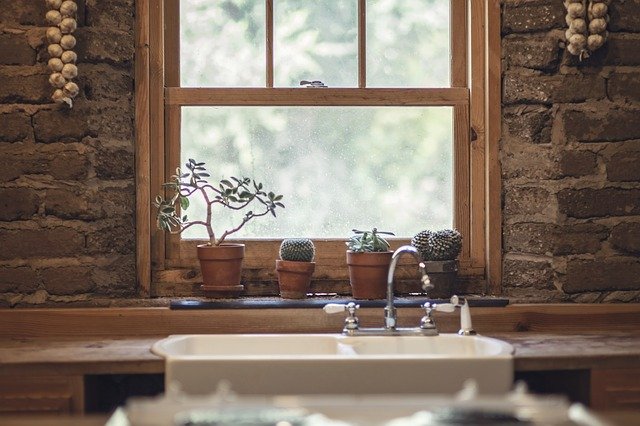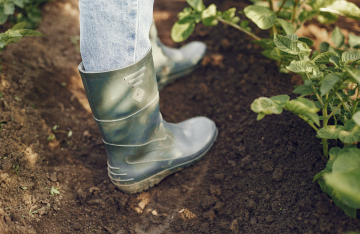Decluttering can be a relaxing experience or a very stressful one, depending on the person and the amount of clutter. With a little pre-planning and doing a little bit every day, however, you could declutter your entire home in much less time than you think, even on the busiest of schedules.
Decluttering tricks and tips
- The most important rule is to set goals and take it slow. Give yourself 5 minutes to declutter a different area each day. It can be a drawer, a counter, or your kitchen cupboards. No matter where you start, just make sure you’re getting rid of all the items you don’t need or use. On the next day, clear another zone. Keep at it until you declutter the entire house.
- Sit down and create a step-by-step action plan for clearing your home. Each step should be a different area in your home that needs decluttering. Begin with the easiest one – the cleaning supplies pantry, for example. Once you are done with an area, stop and take a rest. The good of this method is that it easily fits into any schedule, allowing you to keep track of the areas you have cleared and proceed with your project whenever you want.
- Turning your decluttering project into a game can also help. For example, the 12-12-12 challenge is a fun and exciting way you can use to quickly organize your home. Simply, find out 12 items to dispose of, 12 items to donate, and 12 items you have borrowed and need to be returned to their proper owners.
- You don’t need to clean the entire house on your own. Make it a competition between you, your spouse, and your kids to see who will complete the challenge quicker.
How to declutter different areas of your home
Kids’ rooms
Always include your children when you are cleaning or decluttering their rooms and lead by example. Children observe us from the moment they are born, and they take examples from our actions and feelings. So, if your child sees that you hate the idea of cleaning and organising, they will hate it too. Try to always be positive about cleaning, always remind them of the benefits of having a clean and organised room (no bacteria, it’s easier to find things, etc.).
Make sure they have enough places to put away their toys – boxes and baskets are usually a great way of storing items. Also, add a little waste bin in the room so that they can easily dispose of items they don’t need.
You could also make it a habit to rotate their toys. Take away neglected toys and stash them in a big bin or a box somewhere they won’t look. In a couple of weeks when the child starts getting bored with their current toys, reintroduce some of the old ones. This will help them appreciate all of their toys more, as well as keep the clutter to a minimum.
Kitchen
Kitchens are notoriously one of the most cluttered spaces in our homes but you can easily fix that. Here are some top tips on how to do this:
-
- Never store items randomly – Take different containers, label them and place your items there. Make sure to always put the supplies in the same place and teach the rest of your family to do the same. Start by taking everything out and checking out the expiry date on each detergent. Throw away the ones you can’t use anymore in the designated place according to the label. After that, divide them by rooms – bathroom detergents in the bathroom, kitchen cleaners in the kitchen, etc. This way it will be a lot easier to use them and you won’t have to go through mountains of cleaning supplies to get to the one you need.
- Throw away takeaways items – We’re talking about ketchup packets, salt, chopsticks, plastic forks, knives, etc. Chances are, you didn’t even use them so they are just piling up in a corner somewhere. Divide them by type – plastic and paper, so you can throw them in the recycling bin and make sure you don’t let them enter your home again. Most restaurants and takeaway places offer delivery without any cutlery and you can easily tell them to not add those little packets no one ever uses.
- Switch to glass containers – Random cardboard boxes and packets can clutter your cabinets in no time. The solution here is to make your own glass containers – jars and storage containers, for the most frequent food you use. For example, have one jar for rice and when you buy a new packet, just put the rice there. Do the same for pasta, cereal, beans, spices and dried herbs. It’s a great solution to a cluttered pantry because you can easily find everything you need and you can customise them to fit the design of your kitchen. An extra added bonus is that they are pest-proof and no bug or rodent can reach your food in case of an infestation.
- Rotate your kitchen seasonally – Some appliances and cooking equipment are only useful during certain times of the year. Chances are you’re not a regular user of your ice cream machine during winter or the roasting pan during summer. It’s technically the same thing you (hopefully) do to your closet.
Bathrooms
First, you’ll need a flat surface where to put all the items that you’ll sort through so start by clearing your bathroom countertops.Once that’s done, you can begin.
Open your medicine cabinet next and empty its contents on the countertop. Get rid of anything you won’t ever use or that is past its expiration date.
Move on to the bathroom cabinet and drawers next. Work one section at a time. Check all expiration dates and sort what to keep and what to toss.
Get rid of old and broken hair accessories and hairbrushes. The same goes for sticky cans of hairspray and half-empty lotions. Set aside all items you’ve tried once but didn’t like to either toss or give away.
Next is the shower area. Toss away any old razor blades, leftover soap pieces, empty bottles of shaving cream or shampoos. Remove any old bath salts and after shower sprays, you know you won’t use them.
After you are done with all that, inspect the bathroom one last time and make sure you didn’t forget anything.
Congratulations, you’ve now decluttered your bathroom!
Closet
Closets are those places in our bedrooms where the most clutter tends to accumulate in the form of clothes that no longer fit us or that we no longer wear.
You’ll need:
- Trash can for any garbage or irreparably-damaged clothing
- Catch-all bin (or two) for any stuff that belongs somewhere else
- Cardboard boxes (or plastic bags) for any items you would like to give away
To start, take out the entire content of your closet and lay it on the bed. Vacuum or dust the inside if it has been a while.
Sort through the hanging stuff first, and then move on to the folded items and the shoes. Throw away anything that is irreparable and don’t look back. Clothes you’d like to give away go in cardboard boxes (or plastic bags). If you find anything that doesn’t belong in the closet, place it in the catch-all basket.
Once you are done with those, it’s time to sort through your drawers, one by one. Lay the contents of each drawer on a towel. Throw away any garbage or broken items. If any memorabilia is present, leave that for last, as it might sidetrack you and break the overall flow of the process.
Congratulations, you’ve now decluttered your closet!
Remember, the best way to avoid any clutter buildup is to buy less and be very mindful about what you get. If you have a tendency to buy lots of stuff on impulse, you could try to put off buying something for 24 hours to see if you still want it the next day. Chances are some of the times you wouldn’t.
Attic and basement
The attic and the basement are two areas that we tend to put off setting in order altogether. With a clear plan of what we want to achieve, however, we can not only save some space but sort out everything, and make each item easy to access and locate.
Here are some useful tips for organising and decluttering both places:
- Put items you use frequently near the front, where they are easy to access and the least-used items in the back;
- Keep an inventory: to know not only what u have stored but also where to find it;
- Think twice before storing items – do you really need it or will it just add to the clutter;
- Label every box for easier access as well as to remember its contents;
- Create specific zones (for holiday items, sentimentals, etc);
- Invest in weatherproof boxes to avoid water damage or mould/mildew, (and don’t forget to add desiccant packets in each one);
- Check both places regularly to make sure everything’s alright.
When decluttering your attic, it’s best to remove all items from there before sorting. Put them in either the hallway or another room. Once that’s done, you can give a thorough cleaning to the now-empty attic because you might not get a better opportunity anytime soon.
Sort through your stuff one box at a time and remember that you don’t have to get it done in a day. Throw away anything broken or no longer useful, and make sure to leave sorting memorabilia for last, so not to break your rhythm. Use dust covers to protect any travelling suitcases or any other items you deem fit.
Don’t forget to label each box once you are done with it and to arrange the frequently used items in the front.
To protect your stuff from moisture and temperature damage, invest in weatherproof boxes because, in the long run, no roof is immune to leaks.
The basement should get the same treatment as the attic. You want to set a designated area for sorting through all your stuff and begin one area at a time. As you sort through each box, you could also create an inventory of everything, so you can easily find what you’re looking for next time.
Make sure to use the most out of your vertical space. Vertical shelving units, wall and ceiling hooks will not only increase storage space but make everything easier to find.
The biggest concerns for basements are the humidity and various pests that find it an attractive environment. Invest in a dehumidifier to protect your stuff from mould and mildew. You’d also want some airtight containers to keep away moths, silverfish and other types of critters.
Bedrooms
Science says that once you declutter your bedroom and set everything in order, you are more likely to fall asleep easier.
That’s why it’s best to remove all clutter and keep only the essentials afterwards.
Start small and focus on one area. Again, you don’t have to do everything in a single day, you could break the task down into small chunks of 15-30 minutes a day.
Things that make the bedroom feel cluttered:
- Too many framed photos or pictures;
- Too many pillows;
- Jewellery on display;
- The bedroom chair;
- Unnecessary furniture;
- Curtains that are too large;
- Huge stacks of unordered books;
- Too many small lamps;
- Too many small carpets;
- Dead plants.
Remove any obvious trash first, and then move on to everything that belongs in a different room. Make your bed, if you haven’t, and you have an empty surface to put items on for sorting. Then, clear all flat surfaces in the room off stuff (things like old magazines, half-read books, old DVDs, etc.).
If you have a TV, it’s best to move it into the living room, as watching television before you go to sleep disrupts your sleeping patterns. The same goes for your mobile and other screens.
Don’t forget to take all those boxes and stuff under the bed (as well as any storage furniture), and go through them one by one as well.
Leave memorabilia and sentimental items for last, and sort through them accordingly.
Once you are done, congratulate yourself – you now have a decluttered bedroom!
Conclusion
Whether we live busy lives by choice or by circumstance, once we’ve successfully decluttered our home, we are going to find that we have much more energy and time. That is because we don’t realise how much a cluttered environment is draining us psychologically until we’ve decluttered and sorted all our stuff. Now, for a reward, we get to experience the powerful truth behind why less is more and how caring for our home becomes easier.




